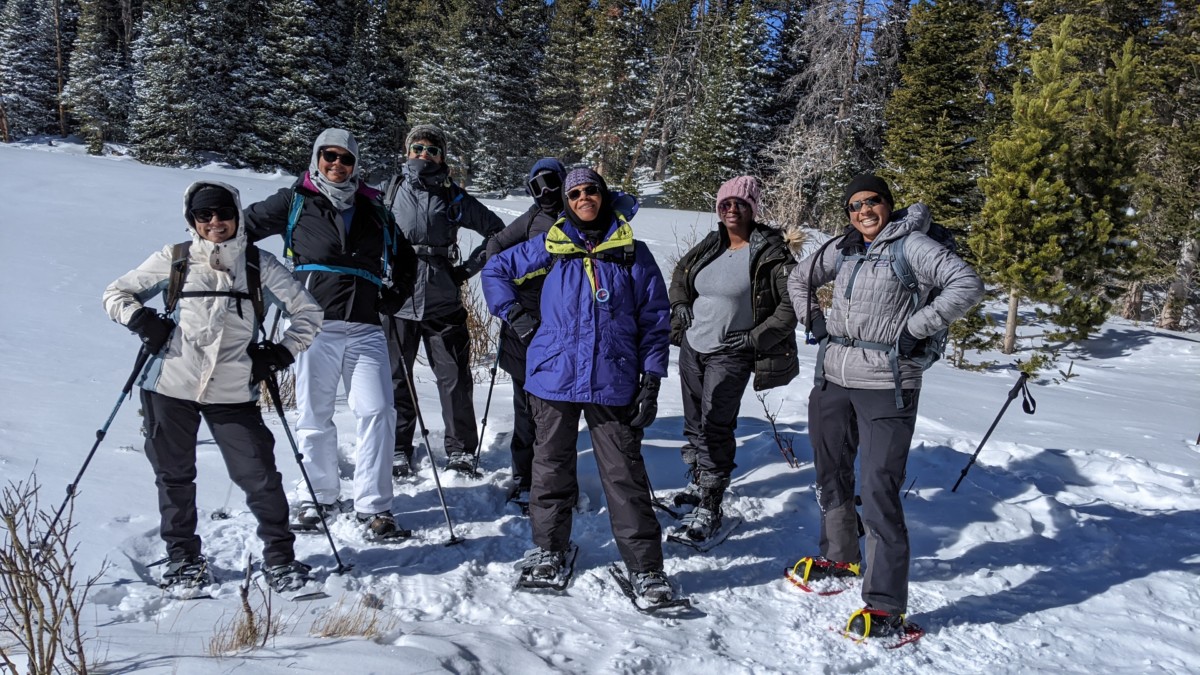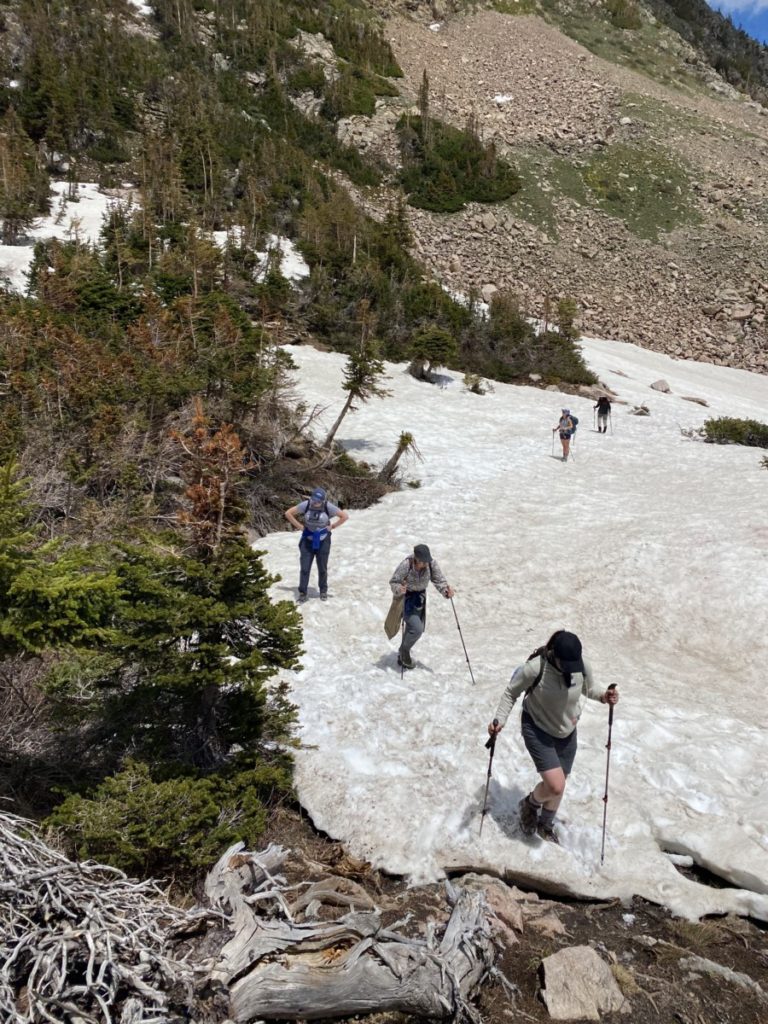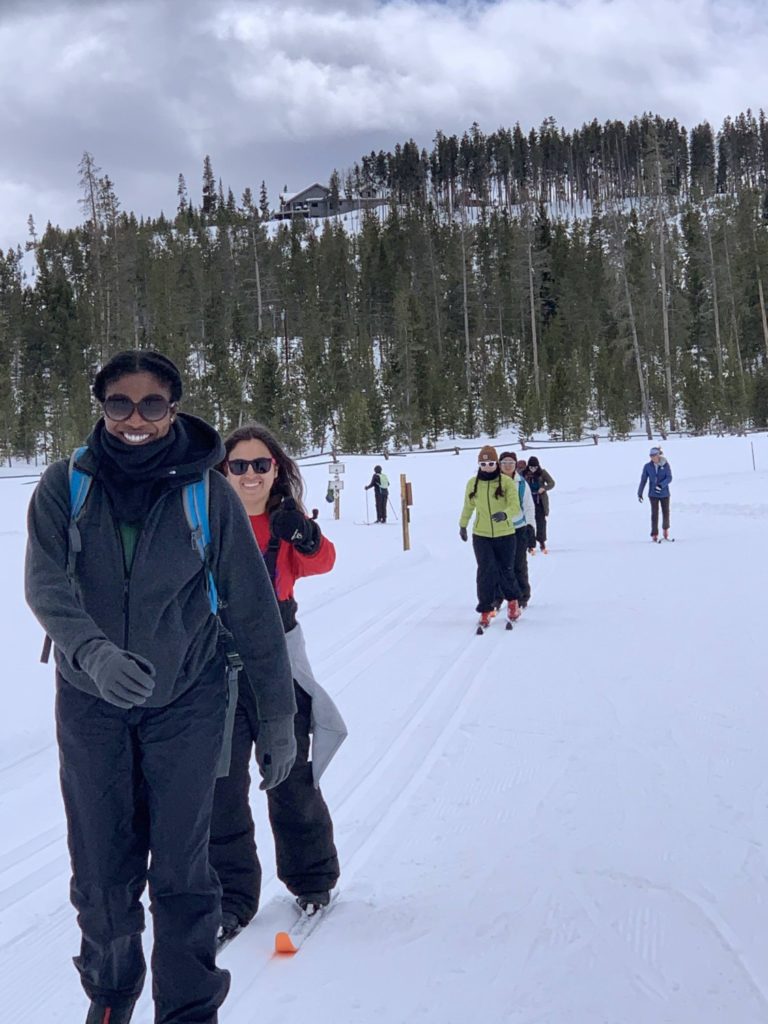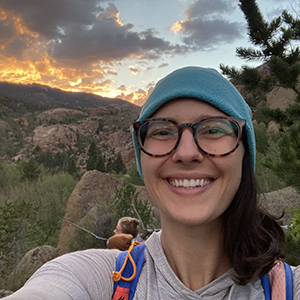How to: Winter Hiking

As snow is falling and blanketing the mountains and valleys, there are certain items to take with you, as well as things to keep in mind, that’ll help make your winter adventures smoother, safer, and more fun! Here’s what our Team had to say.
Microspikes
Steph, our Operations & Marketing Coordinator can still recall the first winter hike she went on where she didn’t have a traction device or winter boots. Let’s just say, her feet were cold and her butt bruised by the end of it.
Warm and waterproof boots will help protect your toes and feet from trench foot and frostbite, while microspikes or crampons will help increase stability and traction.
This combination will have you hiking more confidently, saving physical energy, and preventing nasty slips and falls.
Route changes
Another safety factor to keep in mind is how routes change from summer to winter. One such example is in Rocky Mountain National Park: Sky Pond via Glacier Gorge, where, depending on the season you’re in, you’ll find yourself walking around a small waterfall, or climbing upon its frozen ripples with crampons.


Sun protection
Yoriko, our Admissions Coordinator, brought up the importance of sun protection. Because although it might not feel that warm, the sun’s rays remain powerful. Sunglasses will help protect your eyes from snow blindness (bonus points if you wear glacier glasses), sunscreen will keep your skin from burning (helping decrease the risk of skin cancer), and lip balm can help keep your lips hydrated and healthy (buu-bye chapped lips).
Pro tip: avoid minty lip balms, as essential oils and alcohols will actually dry your lips out.
Hot beverages
Although not a necessity, bringing a thermos of warm coffee, tea, or hot chocolate can be quite a rewarding treat when you make it to your snowy destination, or back to your cozy car!
End your hike by 4pm
Lisa, our Gear & Transportation Coordinator (and most winter-loving WW team member), pointed out the importance of ending your hike by 4pm, given the sun setting earlier.
Darkness brings with it colder temperatures and increased chances of getting lost, so make sure to plan ahead and be back at your car by dusk.
Pro tip: pack a headlamp with you, just in case your hike takes longer than expected.
Neck gaiter
Kriste, our Program Director and Trailblazers Program Manager, always makes sure to bring her neck gaiter with her. Which functions both as a cozy neck warmer (hell yes to keeping that cold at bay) as well as a catch-all for the inevitable runny noses brought about by chilly temperatures.
Layer up layers
Last but not least is the importance of layering up. Wearing a base layer, mid layer, puffy, and shell will both keep you cozy as you start out and allow you to delayer as you warm up, thus avoiding that icky cold sweat feeling.
We’re big fans of merino wool for our base layers as it’s moisture wicking, anti-bacterial (helps prevent the stinkies), and keeps you warm even when damp.


Operations & Marketing Coordinator



















